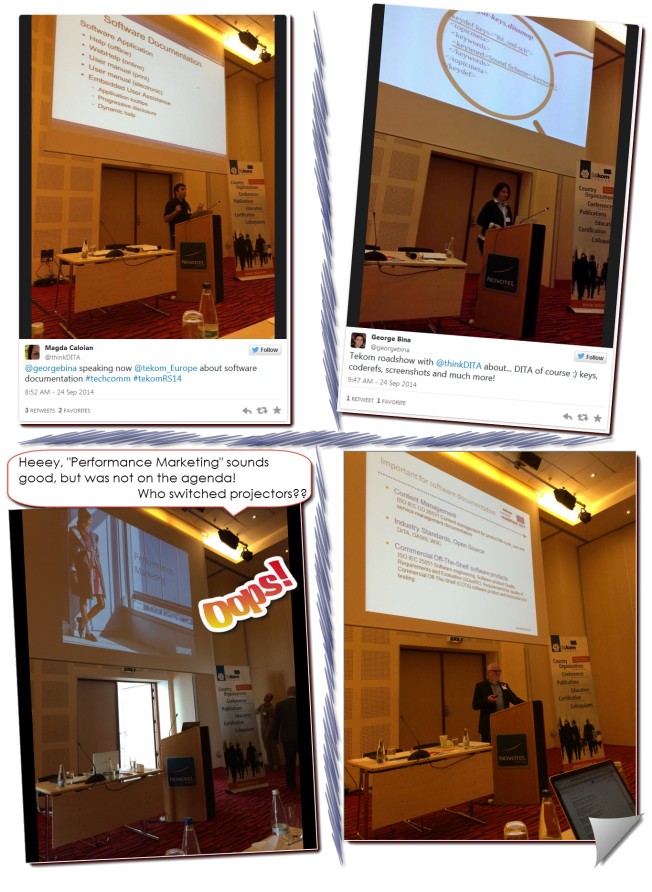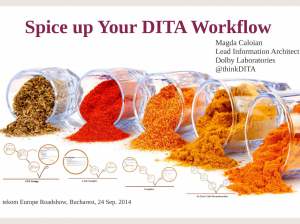Join us (Jang & Magda) for a day’s Master Class on DITA Linking Best Practice at Information Energy 2015
As users of technical information (in a manual, in embedded help or on the web), we use links all the time. Sometimes they lead to the exact topic we need and sometimes we end up running around in a wild goose chase.
So how do you make sure that your users find their information quickly and easily? By setting up the right linking strategy for your product and your business domain. This sounds easier than it might be, as there are various linking strategies and not one of them is the best in all possible situations.
This master class teaches you about the available link management strategies in DITA and gives you a sound basis to decide which strategy works best for your information products.
We’ll explore the various types of linking with hands-on exercises:
- Element-level linking: linking to graphics, tables, steps, files.
- Hierarchy linking: links generated by nesting, family collections, sequences.
- Relationship tables: bidirectional links, uni-directional links, collections.
- Subject-scheme maps: taxonomy and topic assignment.
Each section starts with a conceptual overview and a set of practical tips and tricks, followed by hands-on work using your own set of DITA topics and maps on your own computer. Each practical session ends with a group session in which you exchange experiences and learn from each other.
After attending this workshop, you will be able to choose a linking strategy that fits your information products like a glove.
Date: June 2, 2015
Time: 10:00 – 16:00
Location: Academiegebouw, Utrecht
Language: English
Costs: €395, including lunch and drinks (Early Bird: €295)
Register for the Master Class “DITA Linking Best Practice”
Related links:
Information Energy 2015
JANG Communication
PANTOPIX


